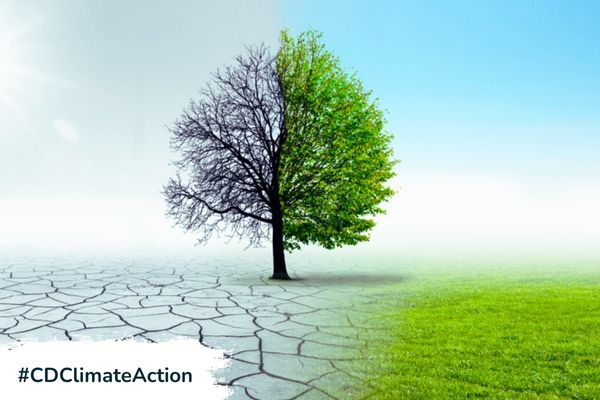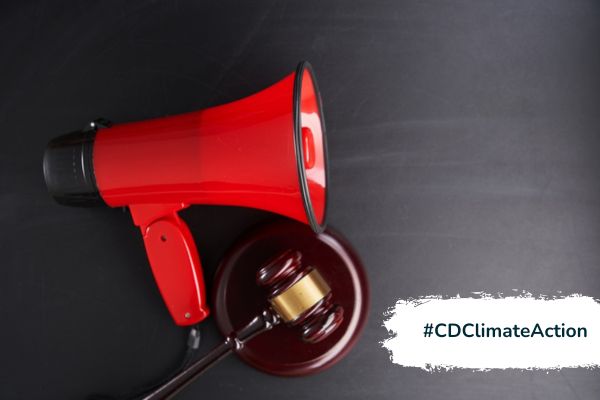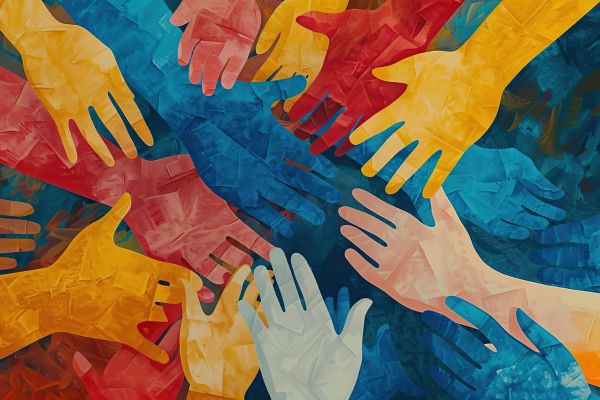Insights
INSIGHTS
All Topics
How to tackle climate injustice
30 Sep 2023by Josie Sparling
How can charities both work for a fairer society and tackle climate change? We explore the meaning of climate justice and how charities of all kinds can fit into the bigger picture
CHECK OUT OUR ’CLIMATE ACTION’ HUB!
The 1980s environmental justice movement evolved from the civil rights movement in the U.S., tackling the ways in which environmental destruction disproportionately impacted the health and wellbeing of racially discriminated groups. The environmental justice movement then evolved into today’s climate justice movement.
Climate justice is based on addressing the relationships between socio-economic injustice and environmental destruction.
We use the term “injustice” to specifically refer to systems of power that are actively destructive to both people and the environment. As we will discuss, this manifests in different ways depending on the context.
In this article, we explore the definition of climate justice and outline some of the justice-based solutions being used to address climate change in 2023.
What is climate justice?
Tackling global injustice
Firstly, climate justice tackles socio-economic inequalities relating to climate change on a global scale.
Put simply, it addresses the fact that those countries that have historically been most responsible for greenhouse gas emissions have the most resources and capacity to adapt to the changing climate, whereas communities who are vulnerable to climate change and environmental destruction are already poor and excluded from benefitting financially from the global economy.
The Intergovernmental Panel on Climate Change found that among the reasons that certain communities are more vulnerable to climate change today are: inequity, marginalisation, and historical and ongoing patterns of inequity such as colonialism.
Friends of the Earth comments: “Just as former colonial powers still reap the financial rewards of having exploited the resources and people of other regions, those that were colonised still suffer the economic consequences, meaning they’re not sufficiently equipped to deal with the devastating impact of climate breakdown.”
Tackling other injustices
Secondly, climate justice tackles other inequalities and injustices that manifest through the environment on a national or local scale.
This includes structural racism, such as when people of marginalised races face the health effects of poisoned tap water, toxic waste dumps, and use of their local spaces as “sacrifice zones” in a variety of other ways.
Other social and economic inequalities which can be exacerbated by environmental destruction include economic class, gender, sexuality, and disability.
Climate justice writer Mary Annaise Heglar sums up: “Climate change takes any problem you already had, any threat you were already under, and multiplies it. Climate change is not the great equaliser, it is the great multiplier.”
It can also include intergenerational inequality, where young people and future generations are expected to suffer the most from climate change impacts though they have contributed to its occurrence the least.
What are the solutions to climate justice?
So now we know what the problems are, what are the solutions?
Friends of the Earth states: “Unjust systems that continue to drive climate breakdown, like economic growth at any cost, worsen existing oppression and further marginalise poorer and more vulnerable communities.”
“As injustice is a root cause of the climate crisis, so fighting for justice must be at the heart of the solutions”.
Loss and damage
Loss and damage is a key issue for global climate justice, referring to a system where wealthier countries give financial support to poorer countries to mitigate and adapt to climate change.
This idea first emerged in the early 1990s, with Ecuadorian NGO Accion Ecologica describing it thus: “The debt accumulated by the northern industrial countries towards the countries and peoples of the south on account of resource plundering, environmental damaging, and the free occupation of environmental space to deposit wastes, such as greenhouse gases.”
What this money is used for is split into two categories: economic and non-economic. Economic uses include rebuilding infrastructure after a natural disaster, or replacing lost revenue from agricultural crops that were destroyed.
Non-economic uses cover issues such as trauma from experiencing natural disasters, loss of community due to displacement of people, or loss of biodiversity.
It applies to both extreme events such as natural disasters, heatwaves, and storms, and slow events such as sea-level rise or acidification.
Combining solutions
The University of California Center for Climate Justice has identified six pillars of solutions to address the broad range of social, racial, and environmental injustices seen during climate change. These are:
· A just transition – a transition towards a green economy, alongside other social, political, and economic transformations that support climate justice
· Social, racial, and environmental justice by addressing the root causes of climate change
· Indigenous climate action – amplifying Indigenous voices and promoting Indigenous sovereignty to support climate change mitigation and adaptation around the world
· Community resilience and adaptation – supporting local communities to develop their own solutions and allowing them to benefit directly from local climate action
· Natural climate solutions that give autonomy to farmers, local, and Indigenous communities
· Climate education and engagement to empower more people to be active citizens and create lasting, system-wide change
For each of these pillars, the university has hosted an online event discussion panel and put together a short list of further resources, which you can view on their website.
Climate justice and holding corporations accountable
As Global Witness explains, “The wealth of European and North American economies was created in large part by extracting land, resources and manpower from countries in Africa, South America and Asia, creating the vast economic inequality which so defines the world today.”
“Even after formal decolonisation, this extractive economic model is maintained by powerful companies whose supply chains stretch across borders, showing little respect for either local communities or the environment.”
The charity states that regulation is the key to holding corporations accountable: “mandatory due diligence” would ensure that companies themselves would be legally required to identify and tackle risks of environmental destruction and human rights abuses and to prove that their business activities are not causing these types of harms.
Although this approach does not address historic harm caused by corporations, this would set up a system that prioritises justice going forward.
Climate justice: what can charities and non-profits do?
As we have previously explored, charities and non-profits can play an important role in the climate justice movement, from helping with funding and technical assistance, to addressing the causes and impacts of climate change in the most heavily affected countries with community-led approaches.
These types of organisations can also provide humanitarian aid and work towards climate justice through collaboration and applying political pressure.
Sign up for our newsletter
Click above to receive the latest sustainability content straight to your inbox
Josie Sparling
More on this topic
Related Content
Recommended Products
Related Videos
Our Events
Charity Digital Academy
Our courses aim, in just three hours, to enhance soft skills and hard skills, boost your knowledge of finance and artificial intelligence, and supercharge your digital capabilities. Check out some of the incredible options by clicking here.























